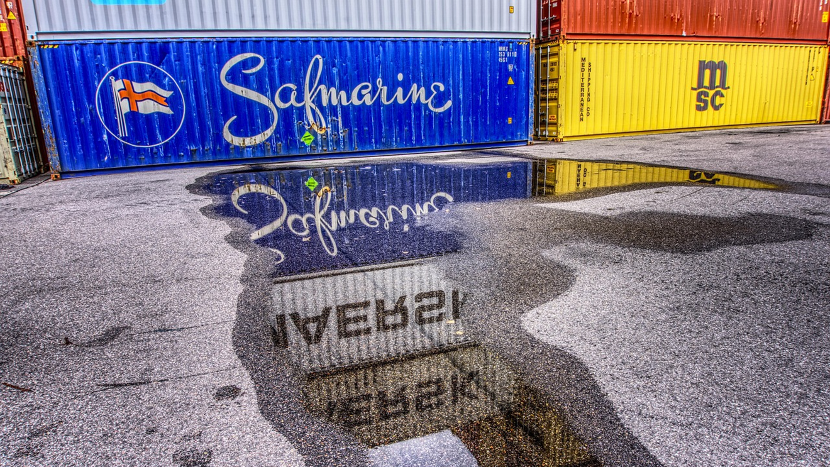“You can’t trust water. Even a straight stick turns crooked in it.” — W. C. Fields
ChrisSchmidt and I recently visited several distilleries on Kentucky’s Bourbon Trail. After tasting one particularly strong whiskey, she reached for a tall glass of clear liquid to chase it down.
“Yeah, that’s probably water,” said our tasting guide, hinting that perhaps it was the unbarrelled, unaged distillate known as white dog, moonshine, white lightning, or new make—the product approaching (but not legally exceeding) 160 proof that comes off the bourbon still. She hesitated, he smiled, and she took a sip before drinking deeply.
It was water.
The whole exchange reminded me of an early experience in my career as a process engineer. I was walking through the unit in the company of one of the most senior operators in the plant. He stepped over a puddle, but my steps were out of sync, so I walked through it. I didn’t want him to think I was squeamish. He stopped and turned to me. Then he looked at the puddle and said, “Yeah, that’s probably water.”
It was an important lesson for a young engineer.
It’s Probably Water
Most puddles on the ground or on the floor really are just water. There are lots of reasons for puddles. Outside, the most common reason is rain. You don’t have to be Sherlock Holmes to correctly conclude that when it’s raining, a puddle is rainwater. Inside, a frequent reason for puddles is a wash down. If an operator is standing there spraying water from a hose connected to a city water hose bib, the puddle they are making is water.
However, if there is a puddle outside and it hasn’t rained for days, rainwater is not a good explanation. Inside, unattended liquid on the floor needs a different explanation. In both instances, the liquid may still be water but the puddle requires inquiry.
Where is the liquid coming from? Leaking steam condensate can form a puddle of water, and except that it could still be hot enough to cause burns, there is little cause for worry if you walk through it. Leaking cooling water won’t even cause thermal injuries. Leaks, however, are indications that something is wrong and they don’t repair themselves. The puddle on the floor is the plant signaling that it needs attention.
It May Not Be Water
Liquid on the ground when it is not raining and liquid on the floor when an operator is not in the midst of a wash down is not normal. “Not normal” is an incident, or at least a near miss. When the situation is not normal, it requires investigation.
First, where is the liquid coming from? Liquid doesn’t just appear out of nowhere. Steam condensate pipes and cooling water pipes are not the only equipment that can leak. Second, if a quick inspection does not reveal the source, is there anything about the liquid itself that identifies it? This doesn’t require walking around with a pocket gas chromatograph or even pH paper, but is there an odor? Color? Foam? A sheen?
Third, don’t ignore it. All too often, personnel will see liquid on the floor and assume that someone else is taking care of it. Don’t. Even when you are in hurry, take the time to notify the responsible parties that there is a liquid on the floor. Even if it’s just water, at the very least it’s a slip hazard. Yes, this is an imposition, especially when you are running late or are overwhelmed by your own responsibilities. And it seems as though the discovery of liquid on the floor never happens at convenient times. It needs to be addressed, though.
An OSHA Violation
Believe it or not, a puddle on the floor is a violation of OSHA regulations. In the general requirements for walking and working surfaces, 29 CFR 1910.22(a)(2), OSHA requires that “The floor of each workroom is maintained in a clean and, to the extent feasible, in a dry condition. When wet processes are used, drainage must be maintained and, to the extent feasible, dry standing places, such as false floors, platforms, and mats must be provided.”
Later in that same regulation, in 1910.22(d)(2), OSHA requires that “Hazardous conditions on walking-working surfaces are corrected or repaired before an employee uses the walking-working surface again. If the correction or repair cannot be made immediately, the hazard must be guarded to prevent employees from using the walking-working surface until the hazard is corrected or repaired.”
In OSHA’s directive to compliance officers for conducting PSM inspections, CPL 03-00-021, OSHA instructs them to conduct an initial walkaround to look for, among other things, corroded or leaking equipment.
Liquid on the floor will always get an OSHA inspector’s attention.
A Two-Step Process
The discovery of liquid on the floor should prompt two steps. The first step is to immediately initiate a clean-up. The person who discovers the liquid isn’t necessarily the person to clean it up, although they might be. That includes the discovery of a puddle in front of the drinking fountain, if for no other reason than the slip hazard it presents.
The second step is more complicated. It requires an investigation of the cause of the liquid on the floor, followed by measures to prevent it from recurring.
Walking Through Puddles
I don’t walk through puddles anymore. I’ve got nothing to prove, and I don’t know what is in them. It might be water, but it might be caustic, or acid, or solvent, or something worse. Instead, I ask about them. What are the plans to clean it up, and what is being put in place to prevent recurrence? We should treat any liquid on the floor for what it is: a hazard with the potential to cause serious injury that should be addressed before it does.
